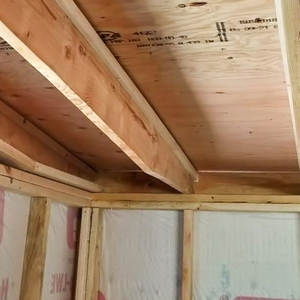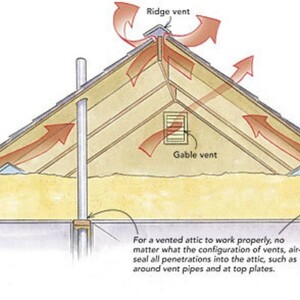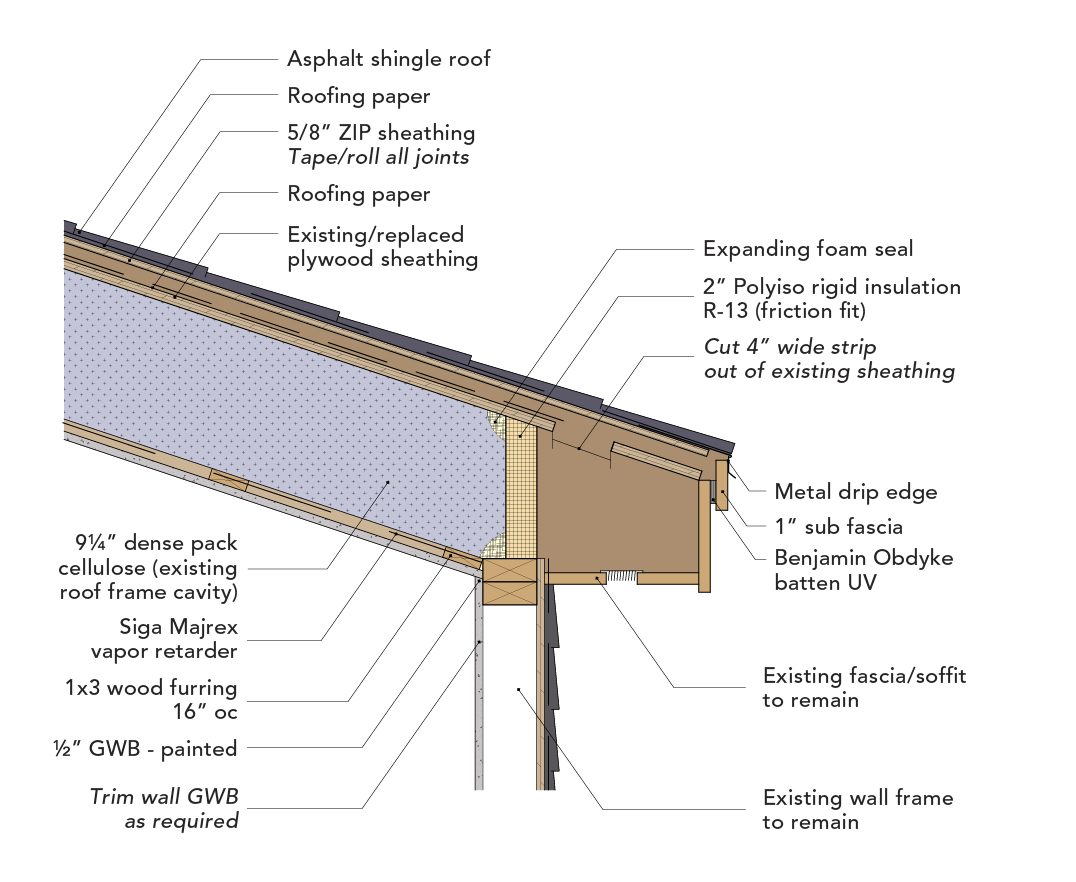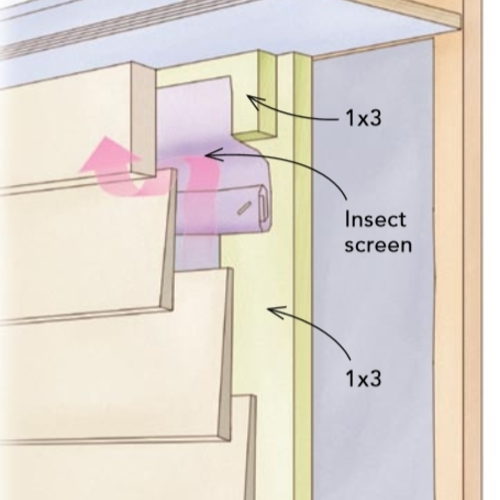
A freshly immigrated Norwegian carpenter built our two-story house in 1931. It has a walk-up attic that can be aired out in the summer with a pair of windows in the gable ends. What the house doesn’t have—like many others in the neighborhood—is any apparent ventilation in the roof.
Houses like ours are no longer permitted by code. Builders usually install soffit and ridge vents on new houses, not only because building codes require ventilation but also because we’ve been told that vents carry away moisture and heat, lower the risk of mold and rot, and make the house more energy-efficient.
The current ventilation standard for residential roofs emerged in the 1940s, roughly 15 years after our house was constructed. The International Residential Code (IRC) provides a formula for calculating exactly how much ventilation a roof should have. It is described as the ratio of “net free ventilating area” to the area of the vented space (net free vent area is the unimpeded area of a vent that allows air to flow through it). That ratio should be no less than 1/300, and it carries a couple of caveats:
- In Climate Zones 6,7 and 8 (the coldest parts of the country), a Class I or Class II vapor retarder must be installed on the warm-in-winter side of the ceiling.
- Between 40% and 50% of the required vent area must be within 3 feet of the ridge or highest point in the space with the balance in the bottom one third of the attic space. (When wall or roof framing gets in the way of upper vents, they can be installed more than 3 feet below the ridge.)
There are many types of roof vents on the market: louvered vents for gable ends, soffit vents, continuous ridge vents, mid-roof vents designed for buildings that don’t have…
Weekly Newsletter
Get building science and energy efficiency advice, plus special offers, in your inbox.

This article is only available to GBA Prime Members
Sign up for a free trial and get instant access to this article as well as GBA’s complete library of premium articles and construction details.
Start Free TrialAlready a member? Log in















7 Comments
In Georgia power attic vents are no longer allowed by code, the only exception being those that are solar powered.
Scott,
A great comprehensive overview.
The first illustration has me thinking: It shows a baffle at the exterior wall to keep the insulation out of the soffits - but also as recommended by GBA, it is air-sealed to minimize wind-washing of the insulation. Is there any data on how much of a problem this is? All I've seen was a link to some work by RDH that seemed to show it was negligible. Intuitively, especially with something like FG batts, wind-washing should be a problem, but is there real evidence it is?
Thanks, Malcolm. As to your question, I just don't know what research is available to quantify the impact of wind-washing on insulation. Possibly another GBA reader can add a reference.
Scott,
All I've seen is this study by RDH that seems to show it isn't the problem we think it is. But it deals with ventilated walls, which are more protected than attics or cathedral roofs:
https://www.rdh.com/wp-content/uploads/2018/06/Wind-Washing-Summary-Report-RDH-Tech-Library.pdf
If wind-washing isn't significant, it fundamentally alters how baffles are installed - or in many cases whether they are even necessary.
Hi Malcolm.
I was just looking over that research and slides from a presentation given based on it. The testing was done for Roxul and shows that with mineral wool insulation, wind-washing has a negligible effect. However, the presentation had a couple of slides that seemed to indicate an 8% to 10% reduction in the R-value of fiberglass insulation due to the wind washing, as set up in their test conditions. I have a question in to them to see if I interpreted this all right and to see if there is any other information available on the topic.
Thanks Brian,
I guess another question would be whether it is worth sealing wall cavities to short circuit convective loops.
I also hope I haven't short-circuited something you were planning to write about. If so, I'm happy to wait for a reply.
I recently watched a video in which Lstiburek states that you want more NFA at the soffit than the ridge because, wait for it, “you don’t want your roof to suck.” If it sucks, and your attic floor isn’t perfectly sealed, it will encourage more conditioned air to infiltrate the attic. It seems like any powered (wind, solar, hard wired) vent would just suck even more. So, don’t use powered vents, and have more NFA at the soffit than the ridge.
Log in or become a member to post a comment.
Sign up Log in